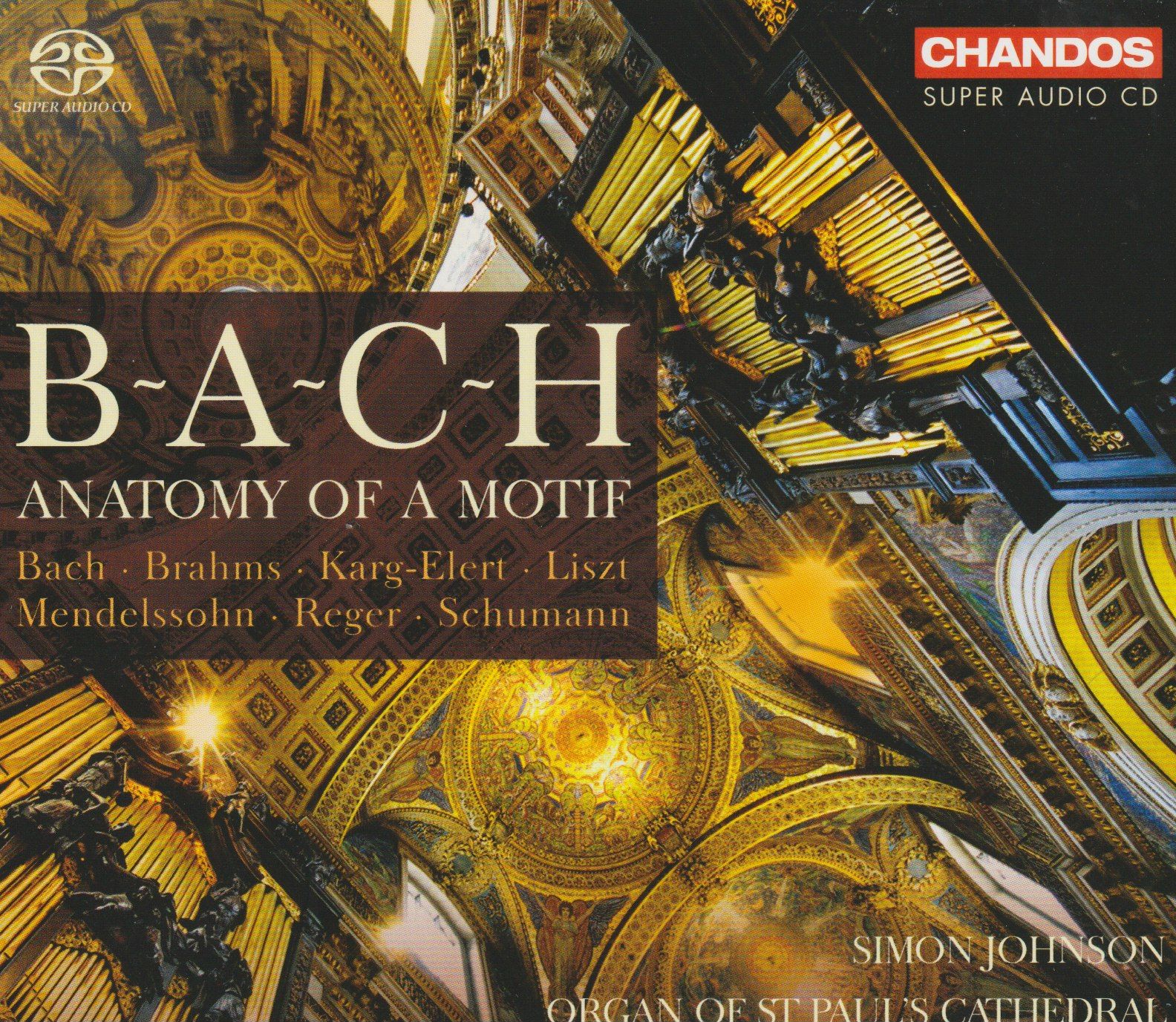B-A-C-H: Anatomy of a Motif
A remarkable set, both informative, and musically satisfying

The name of Johann Sebastian Bach towers over the entirety of Western music. Here, it literally infiltreates music to the core: the name BACH can be rendered as fur notes in German notation (B = B flat; A = A natural; C = C natural; H = B natural), a fact that has generated a multiplicoty of pieces by great composers.
And how else to begin this most valuable release than with music by The Man himself: Lionel Rogg's most recent (2020) completion of the final "Contrapunctus" (XIV) from Die Kunst der Fuge played on the magisterial organ of St Paul's Cathedral in London by our guide to the most famous theme of all, B-A-C-H, Simon Johnson:
The full registration of the St Paul's Great Beast takes six pages of the booklet to list. In this final Contrapunctus, Bach allows himself to bring the B-A-C-H motif to the light (interestingly - not planned - yesterday's post on Schumann's Symphonies made reference to just this motif!).
Another completion follows: Rudolf Lutz (born 1952, and like Rogg, Swiss) has expanded a fragment by Mendelssohn (held in Oxford's Bodleian Library) into a full three-movement piece entitled Sonata on the Chorale, "O Haupt, voll Blut und Wunder". We do know that he opening movement was to be a set of variations, so Lutz took those from Mendelssohn's Organ Sonata N. 6, Op. 65, as a model. Here they are, superbly played by Johnson. Listen to the evenness of his delivery, and how the recording supports the level fo detail he can bring:
Also like Mendelssohn's Sixth Sonata, the present offering ends with an Andante, a place of sweet peace:
Schumann and Brahms complete the first disc. First, Schumann's set of six Fugues on the name of Bach, Op. 60. We know Schumann copied out the whole of Die Kunst der Fuge as an exercise. With the help of a pedal piano, Schumann composed his set of six fugues on B-A-C-H in 1845. The writing is masterly, particularly so in the fourth (track 8 on SACD 1):
The piece culminates in a stunning double fugue. The Six Fugues incidentally directly precede Schumann's Second Symphony, which we discussed yesterday!:
Brahms' organ music dfoes not get the credit it deserves. There's a short piece included here, the Fugue in A flat minor (!), WoO 8. That's seven flats, to you and me, the relative of that equally well-used key, C flat major (yes, it does exist, albeit mainly in theory). No specific B-A-C-H reference here, but there is a coded reference to Brahms himself: H (B natural) - B (B flat) - S (Es = E flat) - A. It's as mysterious as all that might imply, beautifully conveyed by Johnson:
The second disc, again, begins with Bach, this rime the Ricercar à 6 from the Musikalisches Opfer (Musical Offering, BWV 1079), Johnson's chosen registration gilding the music in silver:
Liszt had to turn up at some point, and here he is, the Praeludium und Fuge über den namen B-A-C-H, S 260, written 1855/6 and revised 1869/70. Only ten years separate this from Schumann's fugues, but the music is of an almost demonic force. Chromaticism prevails. The great, much missed, pianist John Ogdon once refrerred to a "Mahlerian ride to the abyss" in relation to this piece. Try the extreme virtuosity of the Praeludium to get a flavour of what he meant:
Later, Johnson pinpoints and almost Messiaen-like devotion held within the musc. It's an astonishing performance.
We might undervalue one part of Liszt's output in his organ music, but arguably we under-value the entire output of Max Reger (1873-1916). His Fantasie und Fuge über Bach, Op. 46 was written in only one week of February 1900. The music surges forward to massive climaxes but also holds moments of Divine mystery. Reger's harmonic basis is chromatic, very much in the Germanic tradition. Johnson had his work untangling this behemoth of a piece. It is 20 minutes long (split into two tracks) and is overwhelming. True, concentrated listening is exhausting. Be warned that the opening of the Fugue is VERY quiet indeed, so perhaps don't choose this one as an exerpt if there's a lot of ambient noise around you! :
Another composer who is not so well known these days and with whom I confess a more problematic relationship is Sigfrid Karg-Elert, mainly because I found his works for harmoium interminable. Here, though, we have the 1932 Passacaglia and Fugue on B-A-C-H, Op. 150, the opening of which should wake the dead:
There are some remarkable textures there, too. Written for a concert tour as organist of the States, thsi is his last major work. It re-uses the fugue from a Harmonium Sonata of 1913, but I won't bear that against it. It is full of colour (effects one critic found "cheap and theatrical," but this time I'm on Karg-Elert's side). And to nail its place on the recital firmly into place, the piece is dedicated to Henry Willis, a "dear friend" of the composer's and - wait for it - grandson of the builder of the organ at St Paul's Cathedral.
Here's a taste of what you can expect, the section laballed "Prima Parte":
Karg-Elert's extravaganza on B-A-C-H closes a fascinating journey over the space of two stunningly recorded SACDs. The final fugue is positively celebrational - and how Johnson manages to keep the momentum without slowing is beyond me:
A remarkable set, both informative, and musically satisfying.
